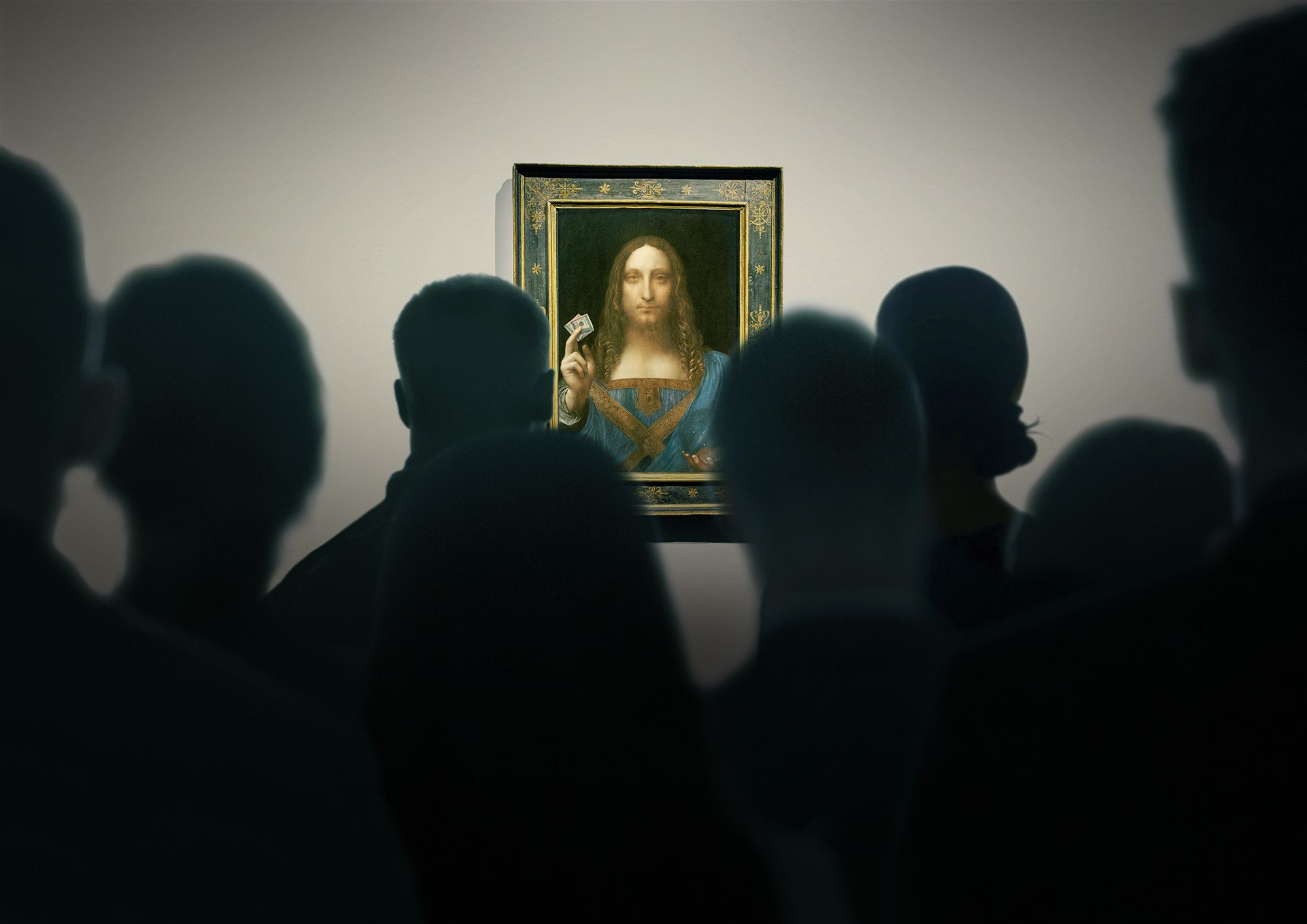An art object is not just art—it can also be a tool that confers power. The contemporary art world has often come under fire as a marketplace of assets for the wealthy, but your average layperson won’t know how when proceedings are carried out behind closed curtains. In the slick new documentary The Lost Leonardo, director Andreas Koefoed pulls back the veil and tells audiences the winding, tortuous tale behind the Salvator Mundi. Supposedly one of the last lost works of Leonardo da Vinci, the painting is subject to controversy that lies not just in its contested origin but its exchanges through powerful hands.
The Lost Leonardo is set up like a good mystery thriller, complete with the appropriate scoring and cold color grading to establish its tone. And like all good mysteries it begins simply enough: in 2005, Alexander Parish, a sleeper hunter—or one who looks for underrated gems of art to sell at auction—finds a painting of the savior Jesus Christ from the 1500s, and follows his gut feeling that there is something more to this piece than meets the eye. He believes it to be a work painted after the style of the lost Salvator Mundi, by either a student or follower of Da Vinci’s. Along with Robert Simon, an art dealer, he enlists restorer Dianne Modestini to have the painting cleaned up. As she works on restoring the colors and brush strokes, she makes a startling gut revelation: this painting was in fact painted by Da Vinci himself, and is the lost Salvator Mundi.
This single determination, made by a lone art restorer, sets off an entire convoluted saga for the painting, influenced by many different voices holding conflicted vested interests. Included in this line-up are Da Vinci experts who determine the painting to be the real artifact and want to uphold their reputations of expertise, museum curators and auction houses who want to amplify the prestige of their institutions, and—of course—the well-monied businessmen who play the most famous painting in the world as a trump card in financial dealings. By the end, it’s very clear to see the story of the Salvator Mundi is, in fact, not about the Salvator Mundi itself.
Koefoed guides this rapidly unraveling yarn with a steady hand, introducing a surprisingly wide cast of entertaining and fascinating characters, each at just the right time in the story. While the maze grows exponentially more elaborate by every passing minute, one never feels lost in it; The Lost Leonardo is able to walk audiences through it little by little, making time to explain the financial value of art or the motivations behind buyers and auctioneers. The film also uses the painting as a vehicle to talk about more complex topics—e.g. the freeport system, which the ultra-wealthy use to house valuable assets, usually rare works of art like the Salvator Mundi, to exempt them from tariff laws. Modestini, who believes earnestly in the cultural value of art, expresses that she never wanted to restore the painting only for it to be hidden away from the public. The Lost Leonardo expands on this disappointment, making us feel the loss when a work is made into a bargaining chip for those who don’t actually care about the art.
Some minor threads are introduced in an enticing manner yet don’t really go anywhere—namely the art crime specialists—but otherwise this documentary does a competent job juggling all various pieces of the puzzle, setting it up in a way that audiences outside the art world could understand. It’s a tightly structured film that never drags, only more exciting the deeper it pulls you in.
None of the players are truly innocent in The Lost Leonardo—not when so much kratocratic and actual currency is on the line. “Power is never neutral,” says art critic Jerry Saltz (certainly one of the more bombastic characters here), a sentiment captured clearly in the documentary. As thrilling and fun to watch as any fictional crime narrative, The Lost Leonardo is also a straightforward and unflinching indictment of the way power is brokered in our modern-day society—behind the scenes, out of reach, under the veneer of beauty and esteem.
The Lost Leonardo screened at Tribeca Festival and opens on August 13.

